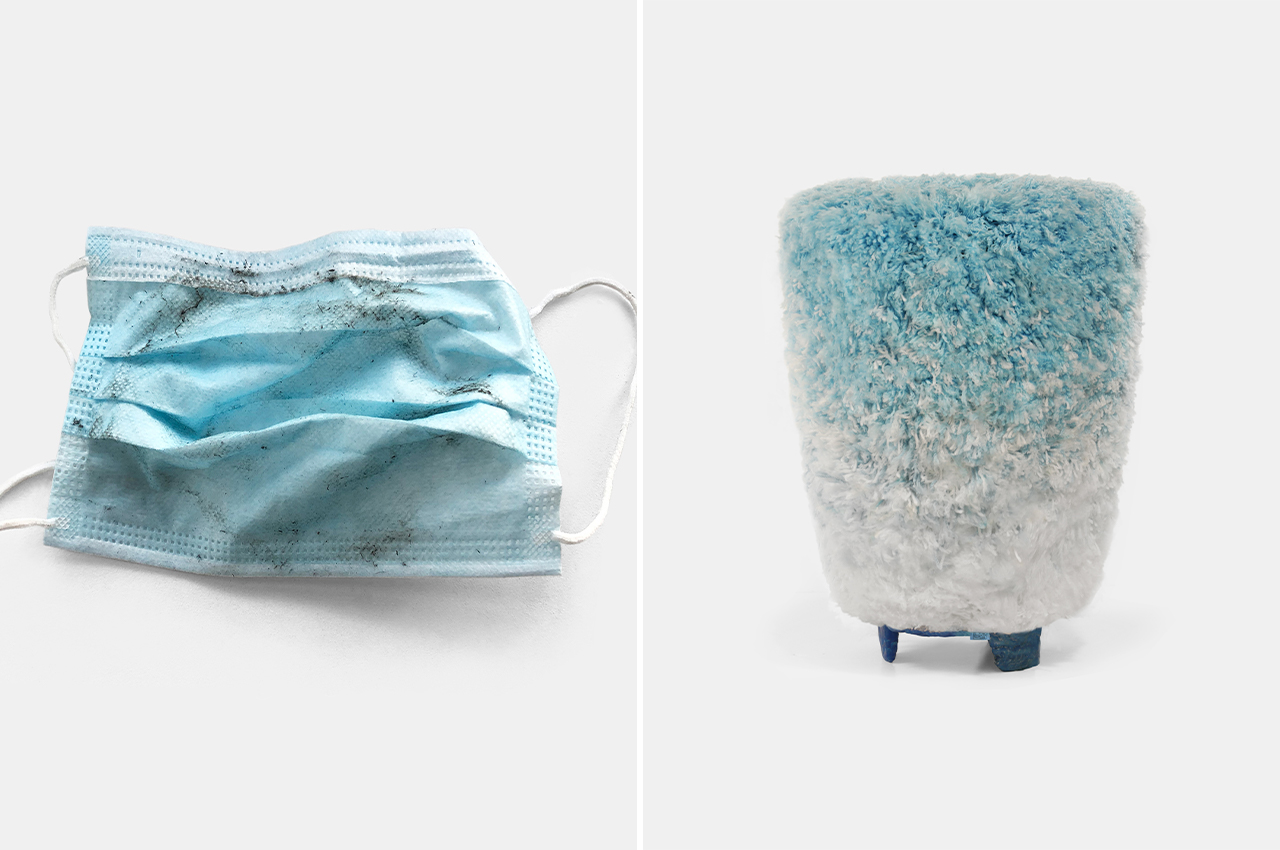
Those blue and white face masks have become the unofficial icon of the pandemic era for all the wrong reasons. Seeing the disposable face mask worn by people has become just as common as seeing them on littered city sidewalks and street corners. Caught up in tangles of twigs and plastic waste, disposable face masks end up as floating marine debris since they cannot be recycled due to the potential risk of indirect infection and viral transmission within the recycling system. UK-based designer Joe Slatter noticed the blue and white litter all over the streets of London and decided to do something about it, weaving disinfected masks from the streets into what he calls the Veil Stool.
After collecting close to 4,000 masks from the streets of London, Slatter disinfected them by coating them in ozone spray and leaving them out in direct sunlight for four weeks. Once they were sanitized and prepared for the next step, an experimental period followed that led to Slatter discovering that 3-ply face masks, the blue and white disposable ones, could be spun into a soft yarn or melted down into a dense polypropylene structure. The stool’s final form finds a threaded, cushioned seat made from facemasks spun into a yarn mounted on top of three short stool legs hardened from melted face masks. Slatter’s recycled stool highlights not only the soft, cottony and dense, supportive nature of face masks but also the beauty that can come from confronting such a destructive issue as pollution.
For Slatter, this project goes beyond a simple recycled design, noting both the environmental and cultural significance of spinning disposable face masks into a stool, “The name ‘Veil’ comes from the notion of a veil being a fine material used to conceal the face, similar to that of a face mask. Veils are generally considered beautiful and therefore the name implies that it can be possible to see beauty in an object that is often disregarded, such as a face mask.”
Designer: Joe Slatter
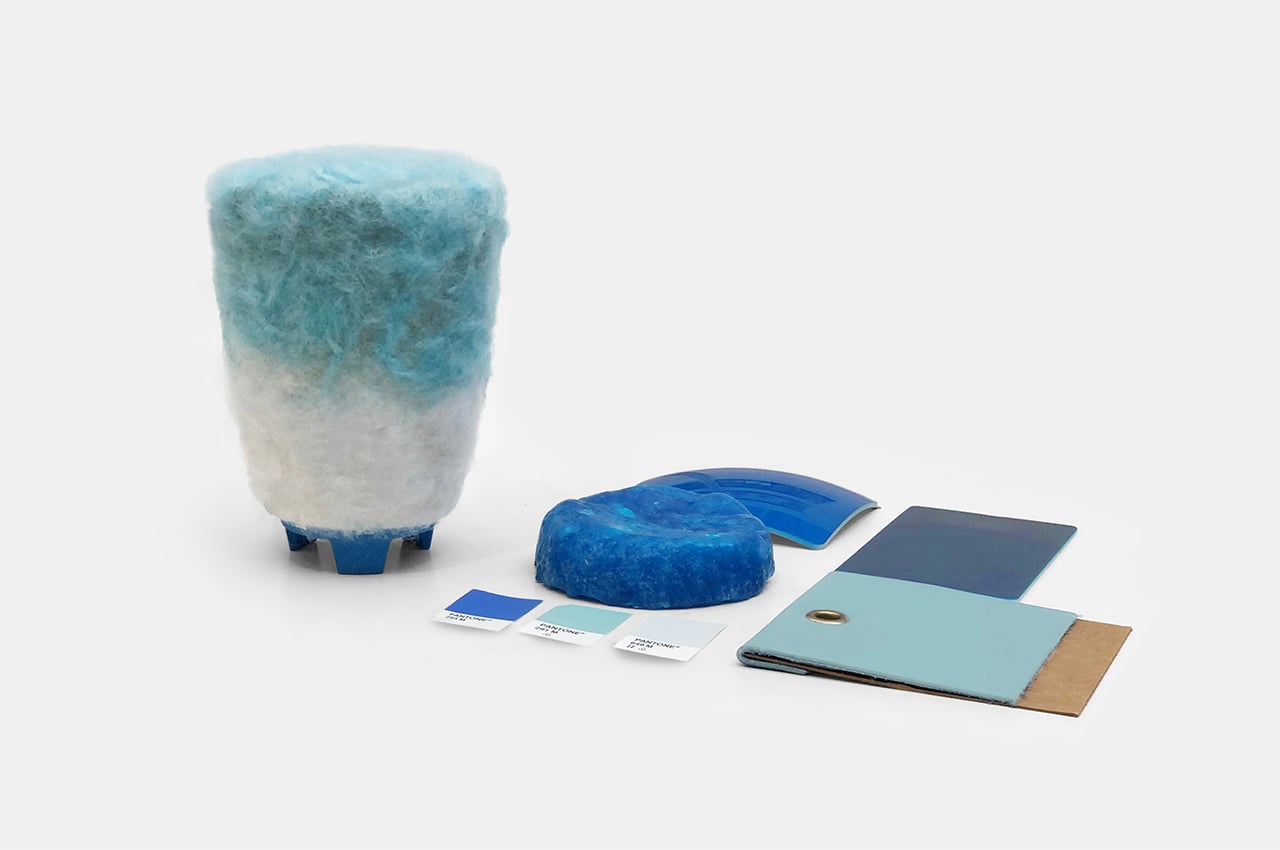
By melting some of the face masks, Slatter created a three-leg base for the soft cushion, made from hand-spun face masks, to mount.
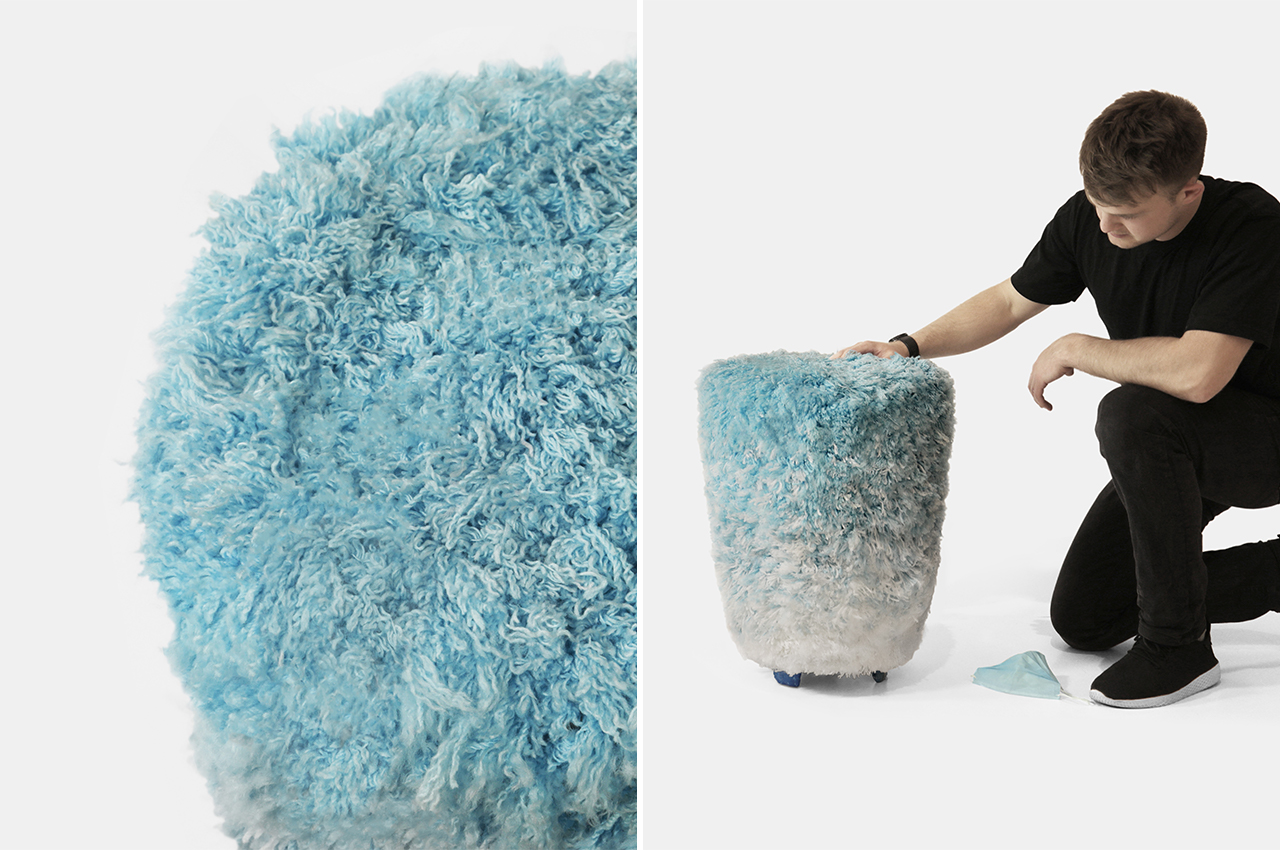
Following a period of experimentation, Slatter found out three-ply face masks could be spun into soft yarn.
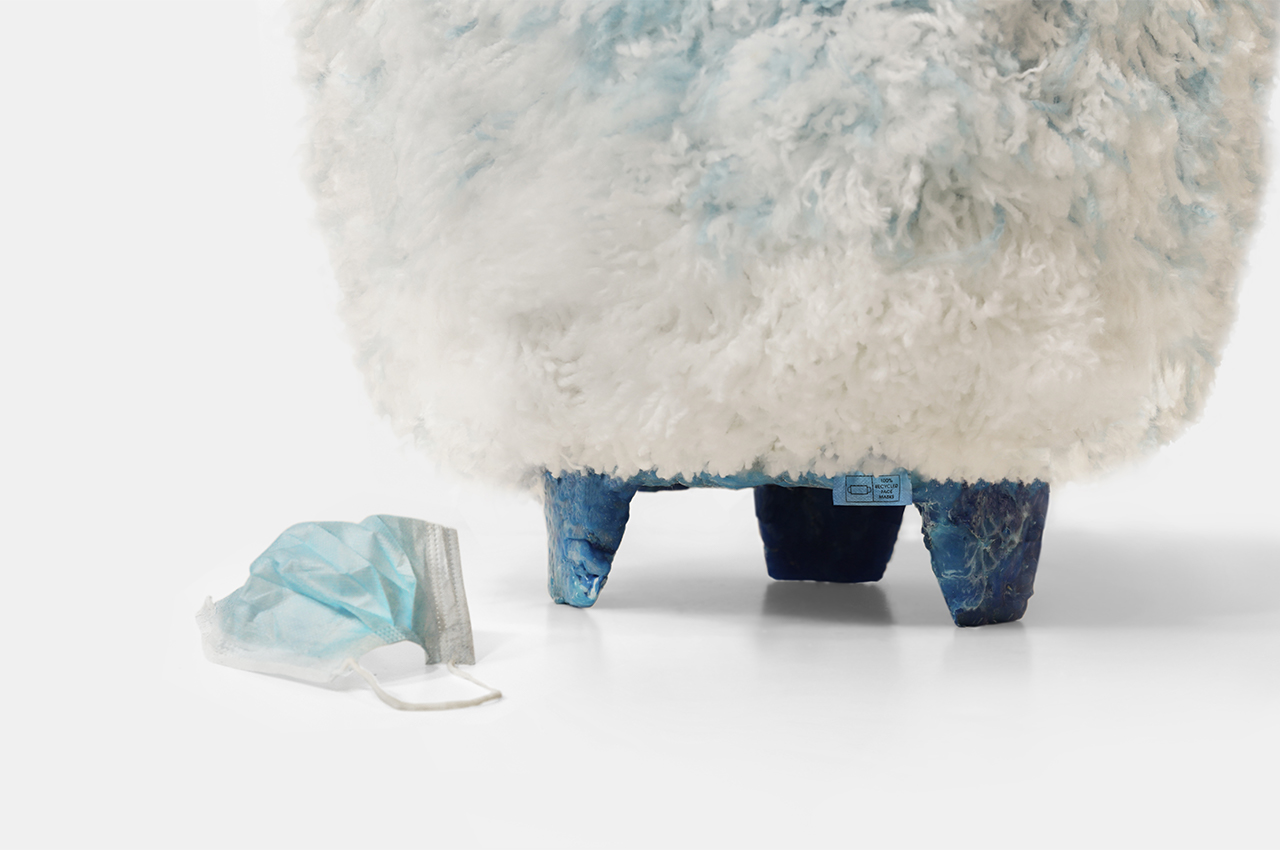
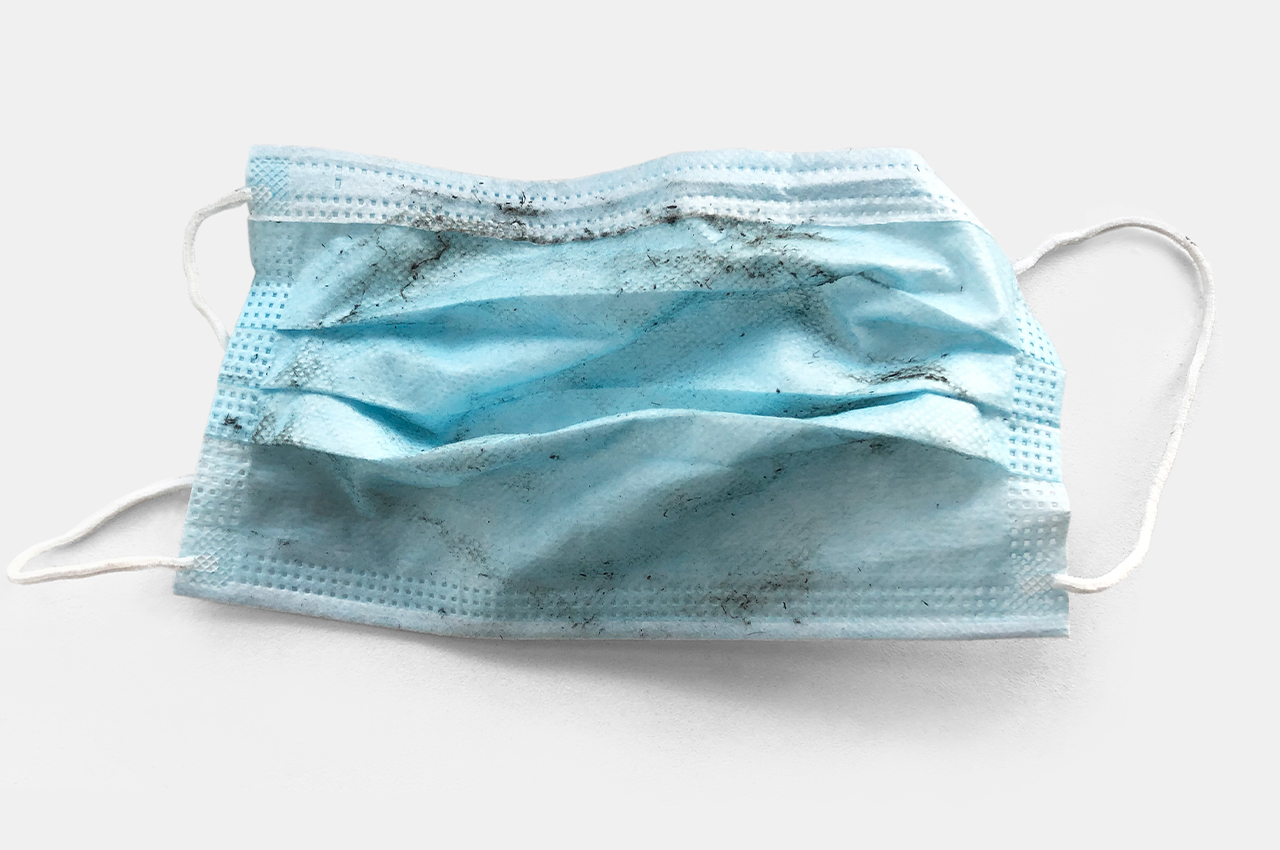
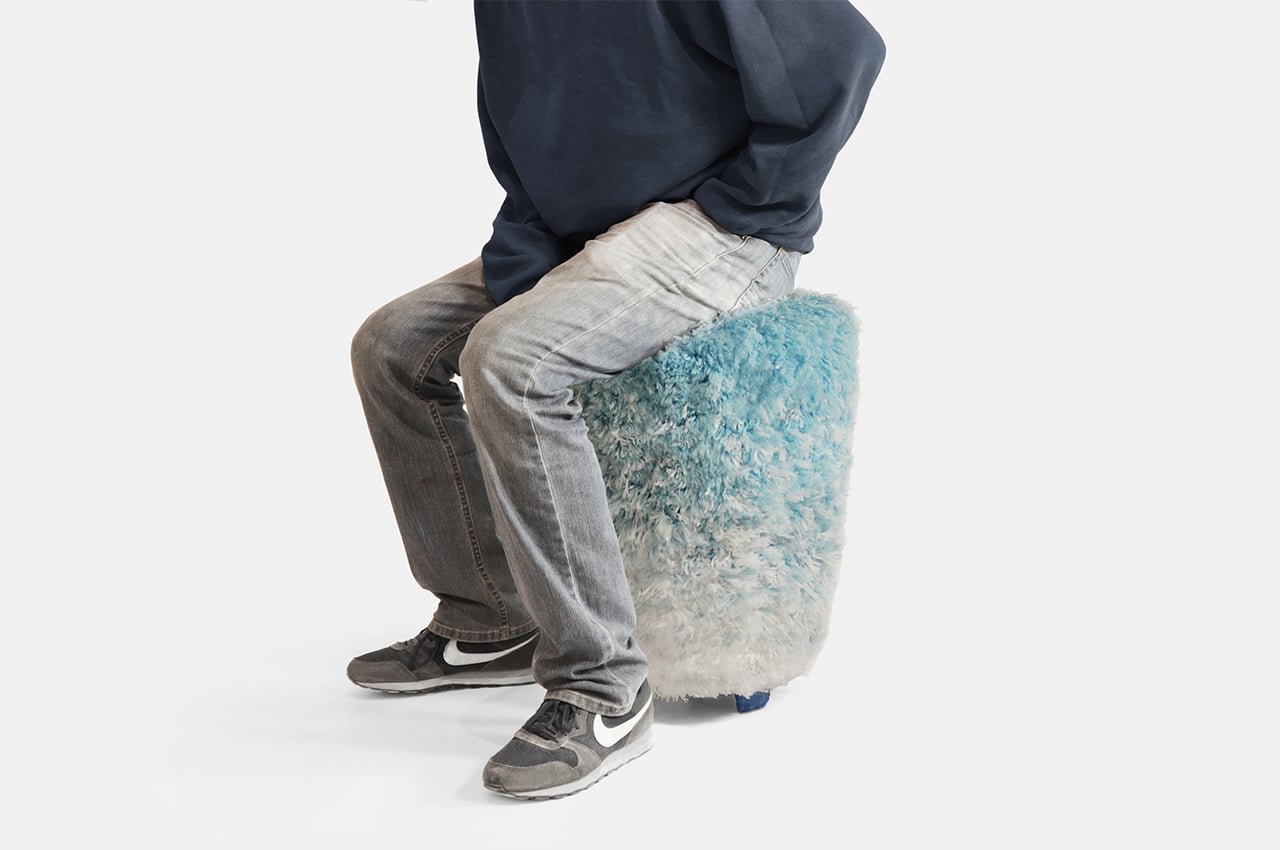
4,000 masks were taken from the streets of London to create one stool.
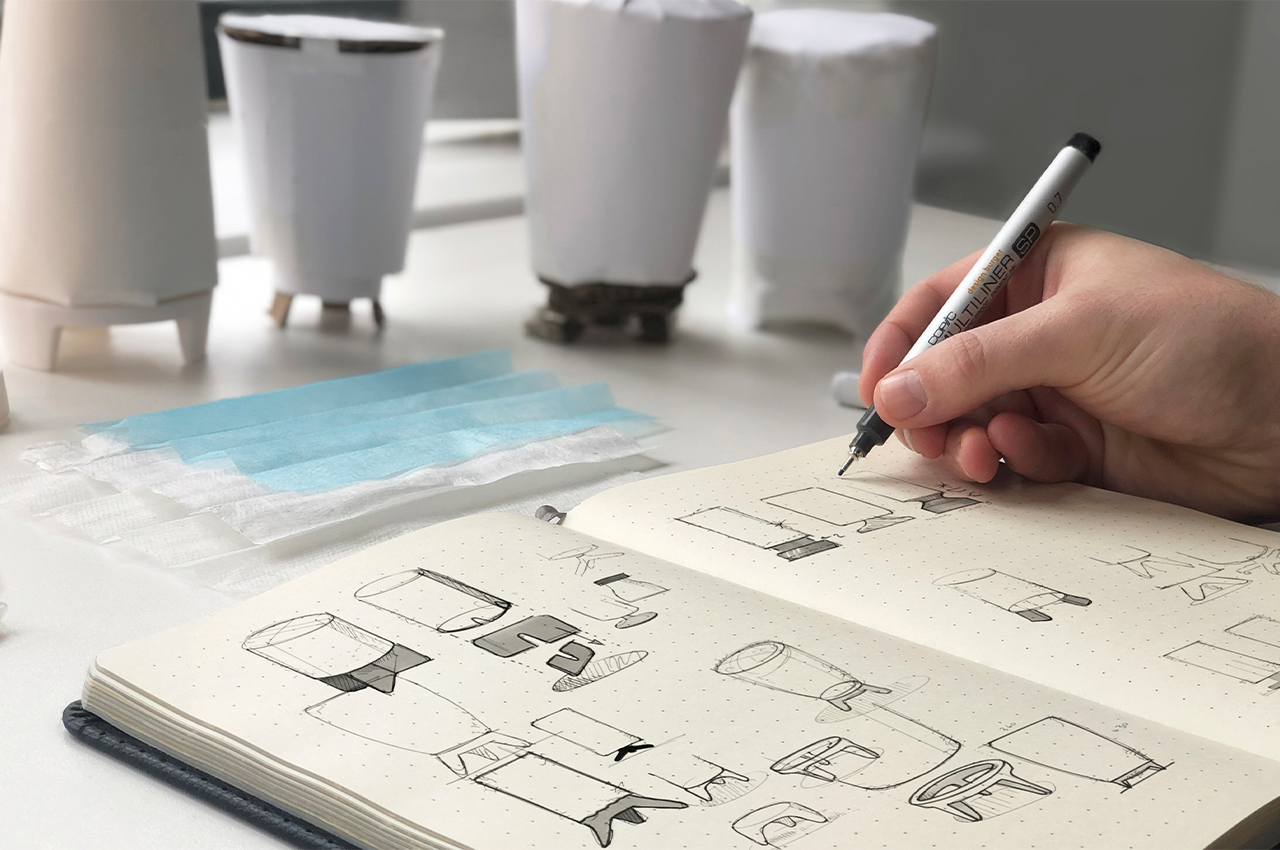
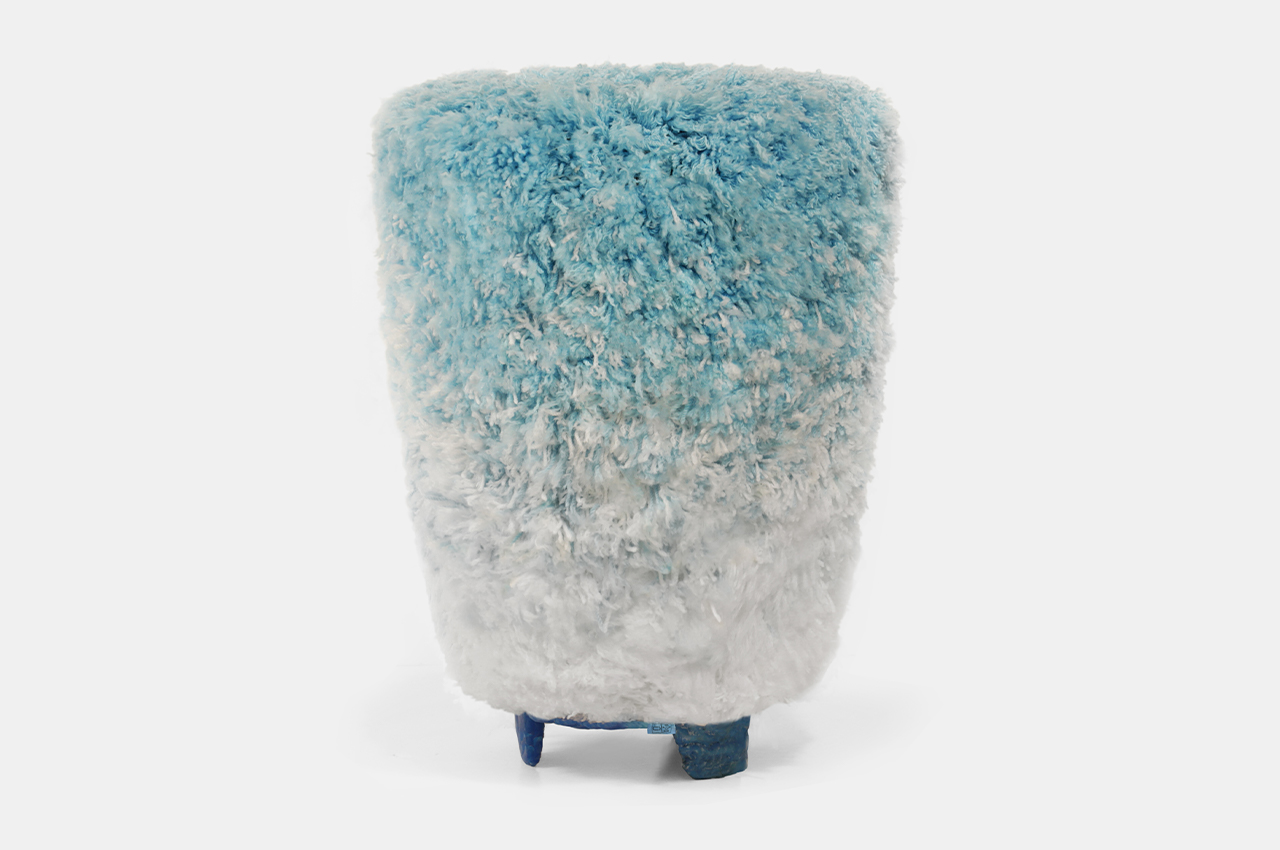
The blue and white gradient is reminiscent of the iconic face masks but can stand alone just as well.
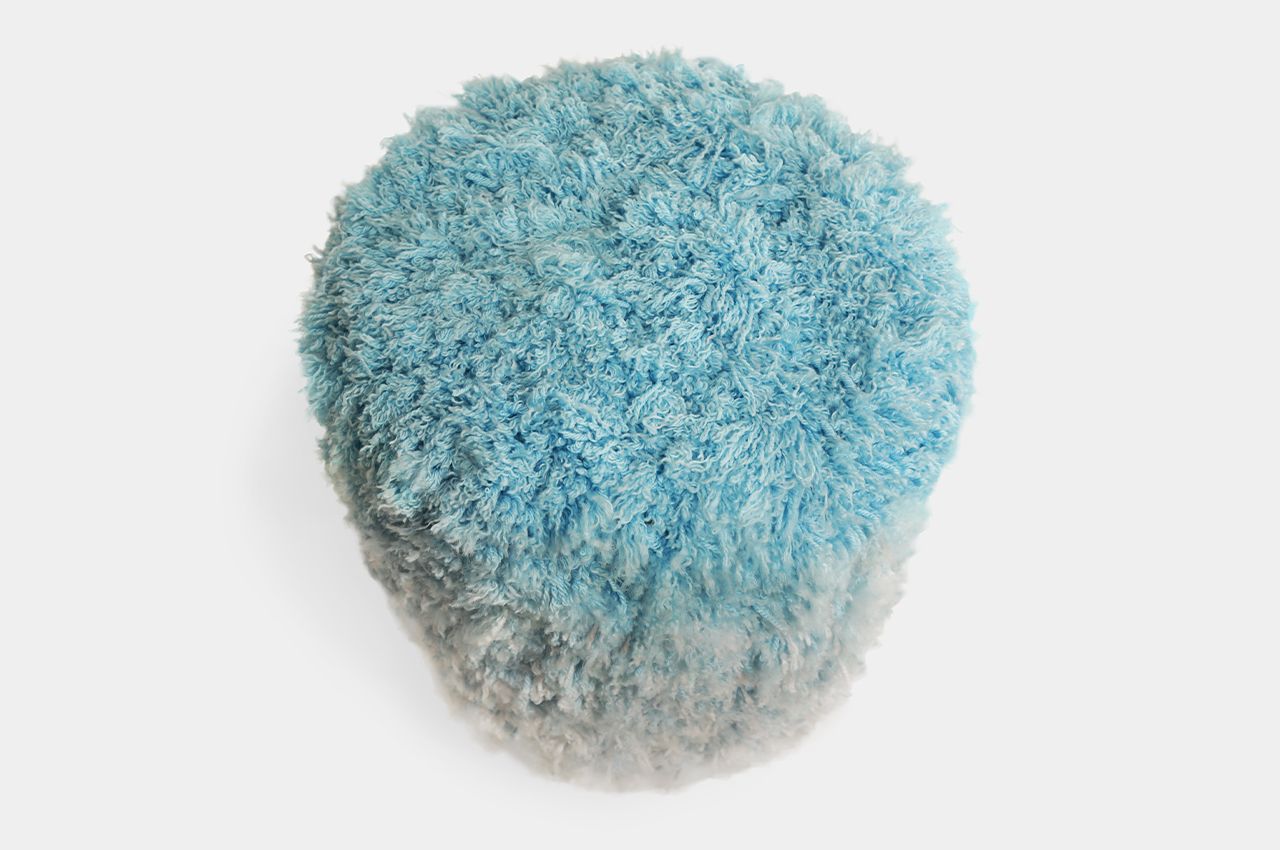
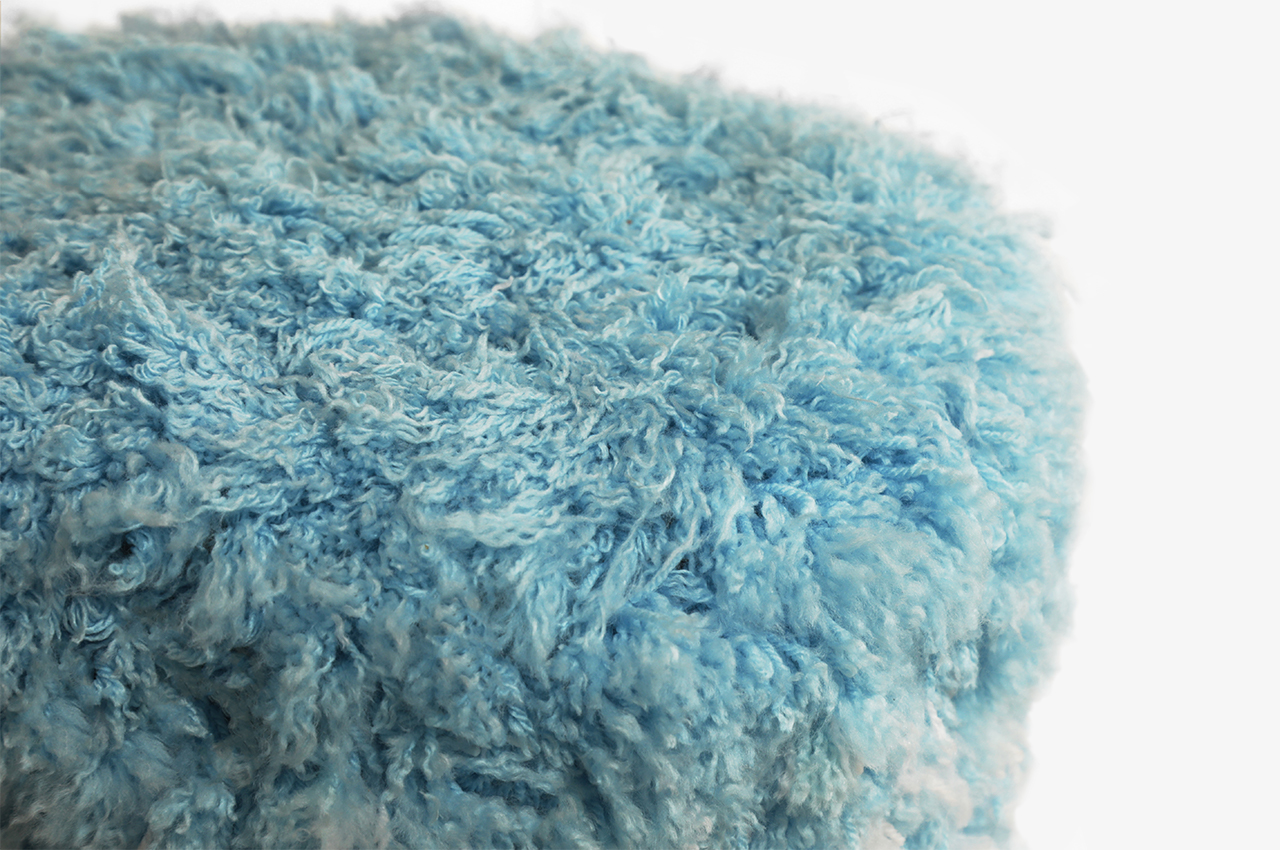
The yarn looks and feels familiar, but its hand-spun from three-ply face masks.
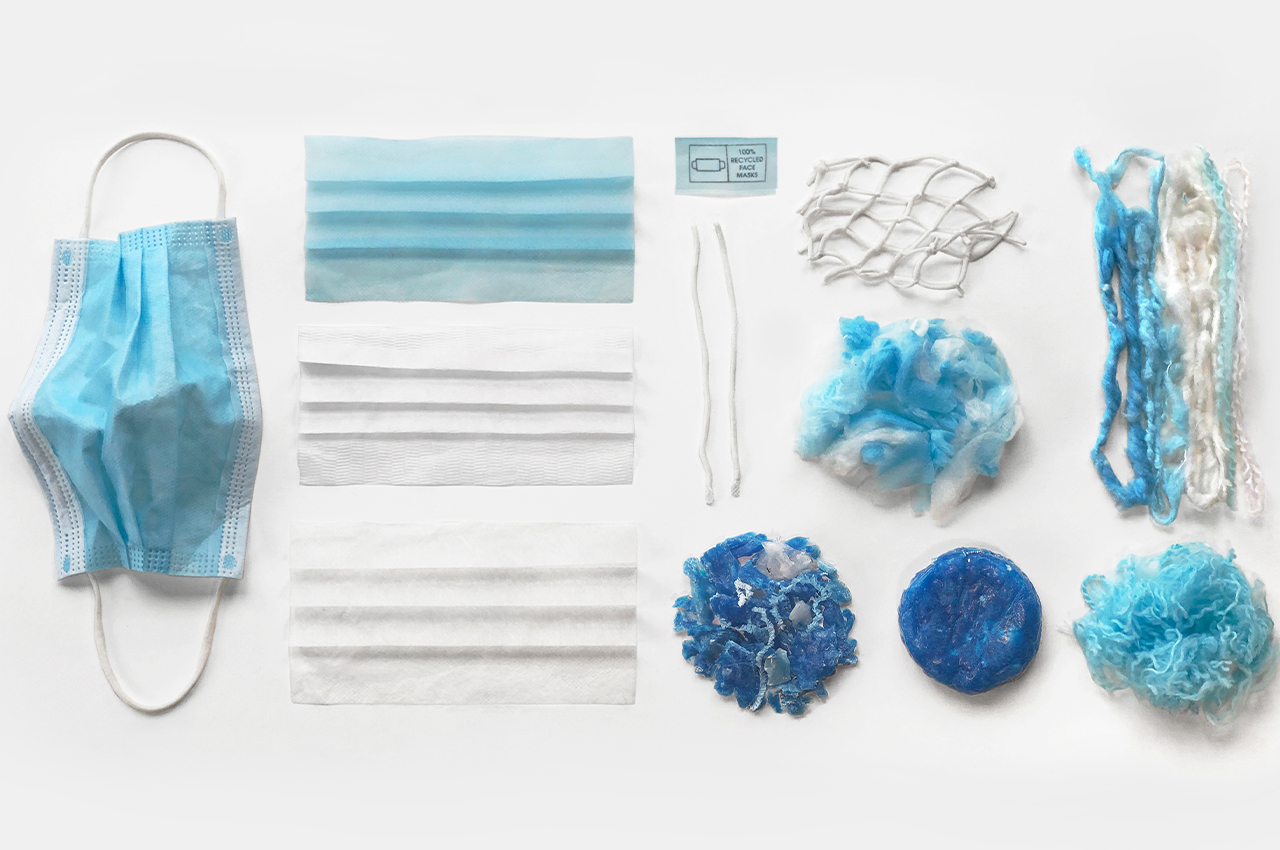
Materials used to build Veil Stool all derive from blue and white face masks.
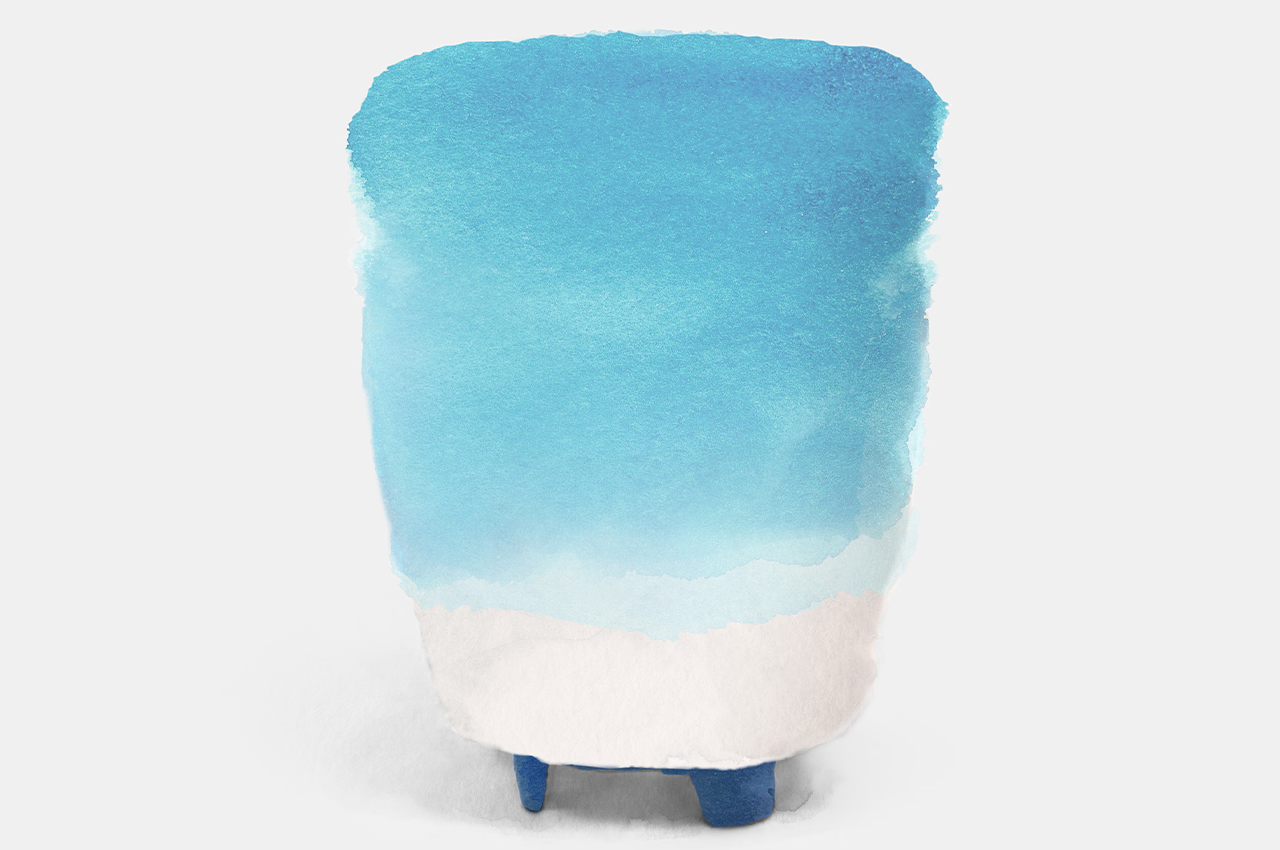
0 Commentaires